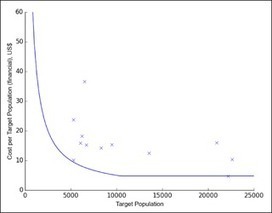Experiences of operational costs of HPV vaccine delivery strategies in Gavi-supported demonstration projects
From 2012 to 2016, Gavi, the Vaccine Alliance, provided support for countries to conduct small-scale demonstration projects for the introduction of the human papillomavirus vaccine, with the aim of determining which human papillomavirus vaccine delivery strategies might be effective and sustainable upon national scale-up. This study reports on the operational costs and cost determinants of different vaccination delivery strategies within these projects across twelve countries using a standardized micro-costing tool. The World Health Organization Cervical Cancer Prevention and Control Costing Tool was used to collect costing data, which were then aggregated and analyzed to assess the costs and cost determinants of vaccination. Across the one-year demonstration projects, the average economic and financial costs per dose amounted to US$19.98 (standard deviation ±12.5) and US$8.74 (standard deviation ±5.8), respectively. The greatest activities representing the greatest share of financial costs were social mobilization at approximately 30% (range, 6–67%) and service delivery at about 25% (range, 3–46%). Districts implemented varying combinations of school-based, facility-based, or outreach delivery strategies and experienced wide variation in vaccine coverage, drop-out rates, and service delivery costs, including transportation costs and per diems. Size of target population, number of students per school, and average length of time to reach an outreach post influenced cost per dose. Although the operational costs from demonstration projects are much higher than those of other routine vaccine immunization programs, findings from our analysis suggest that HPV vaccination operational costs will decrease substantially for national introduction. Vaccination costs may be decreased further by annual vaccination, high initial investment in social mobilization, or introducing/strengthening school health programs. Our analysis shows that drivers of cost are dependent on country and district characteristics. We therefore recommend that countries carry out detailed planning at the national and district levels to define a sustainable strategy for national HPV vaccine roll-out, in order to achieve the optimal balance between coverage and cost.
Experiences of operational costs of HPV vaccine delivery strategies in Gavi-supported demonstration projects
Source: Virology News
